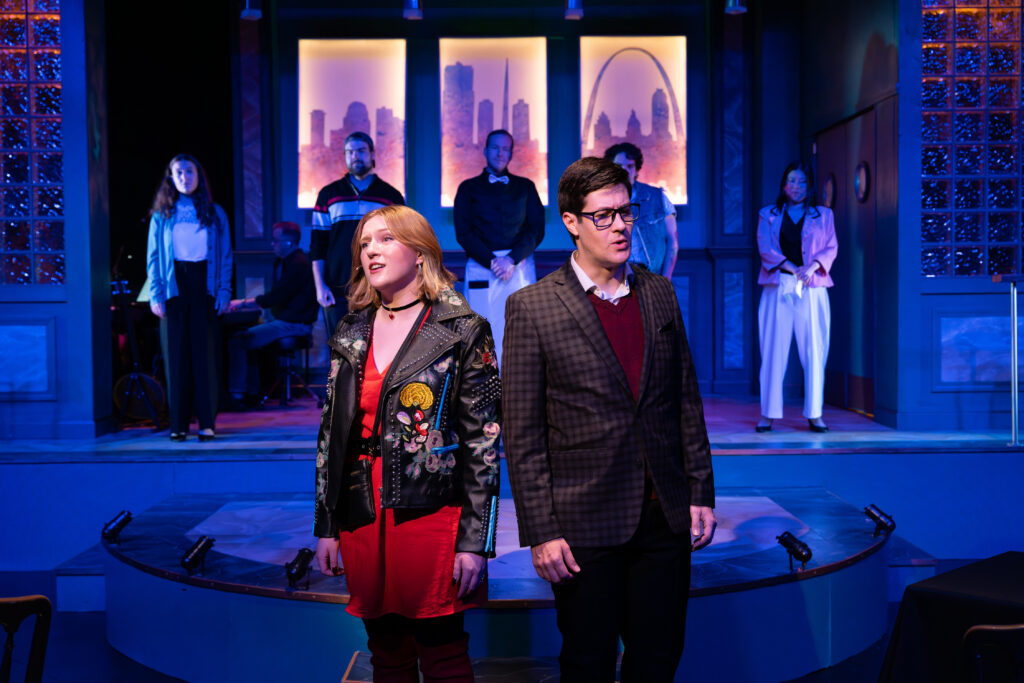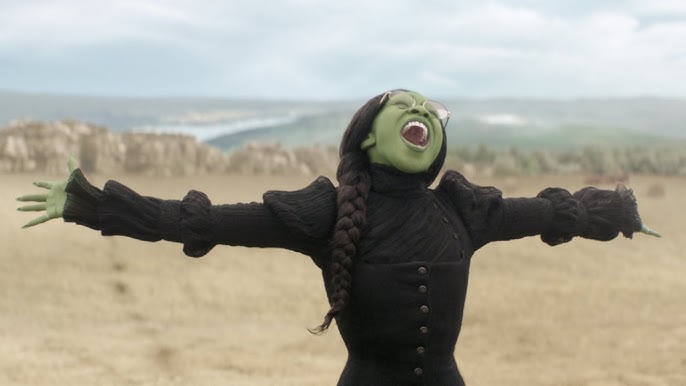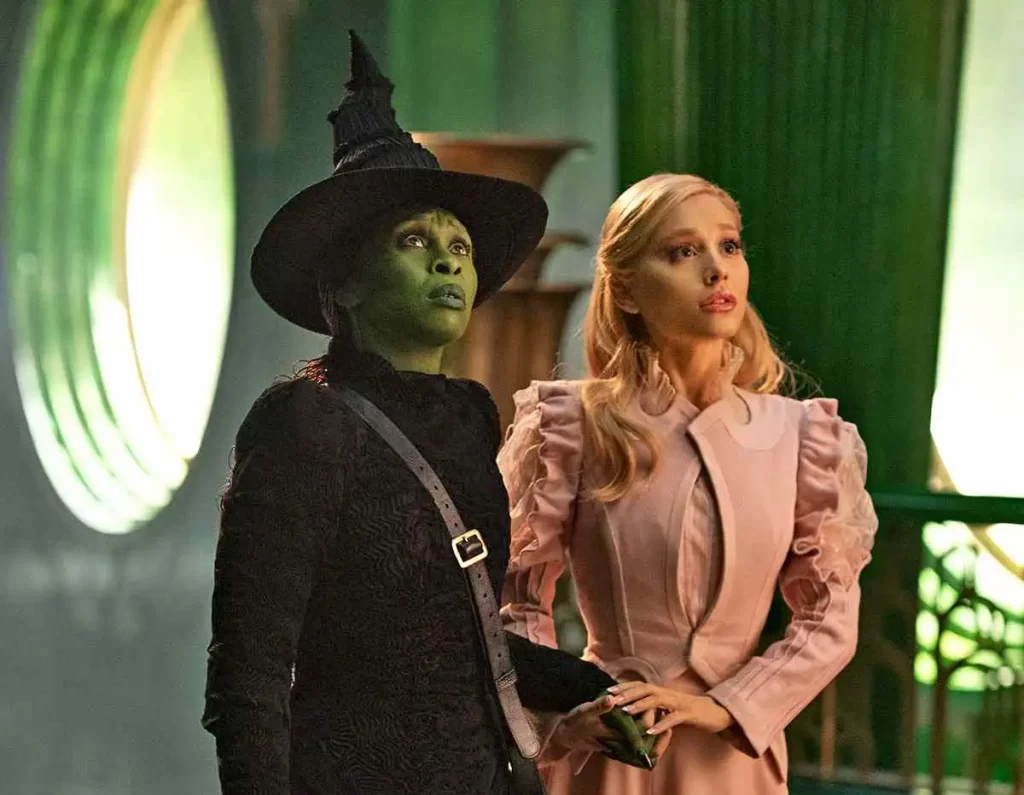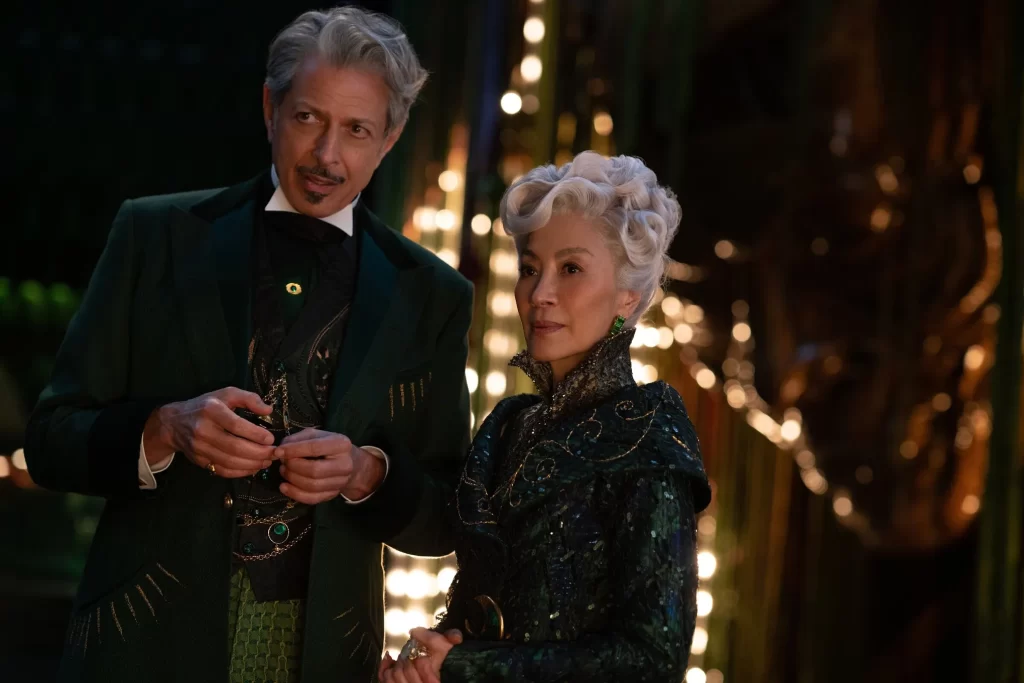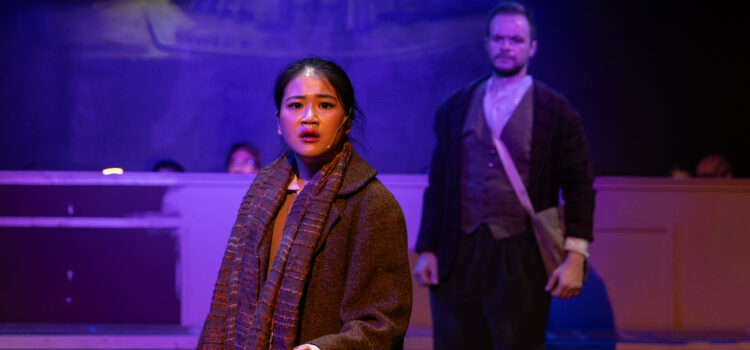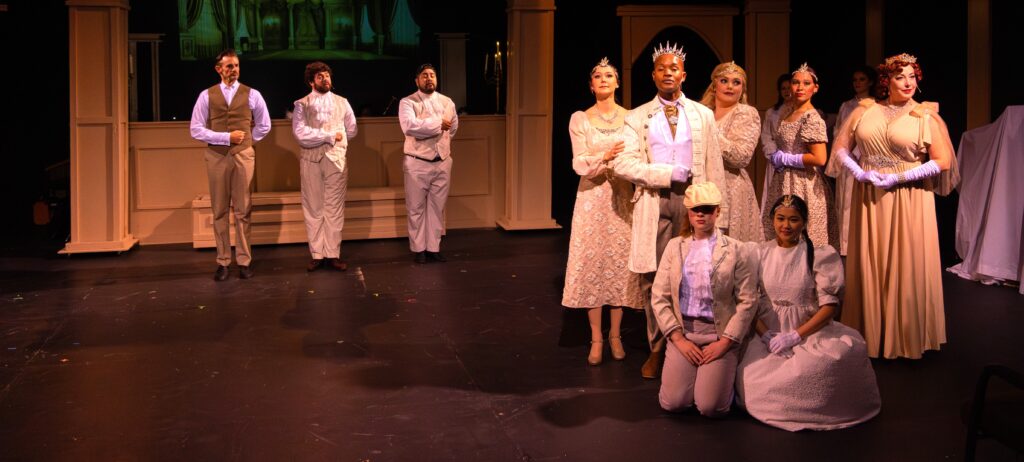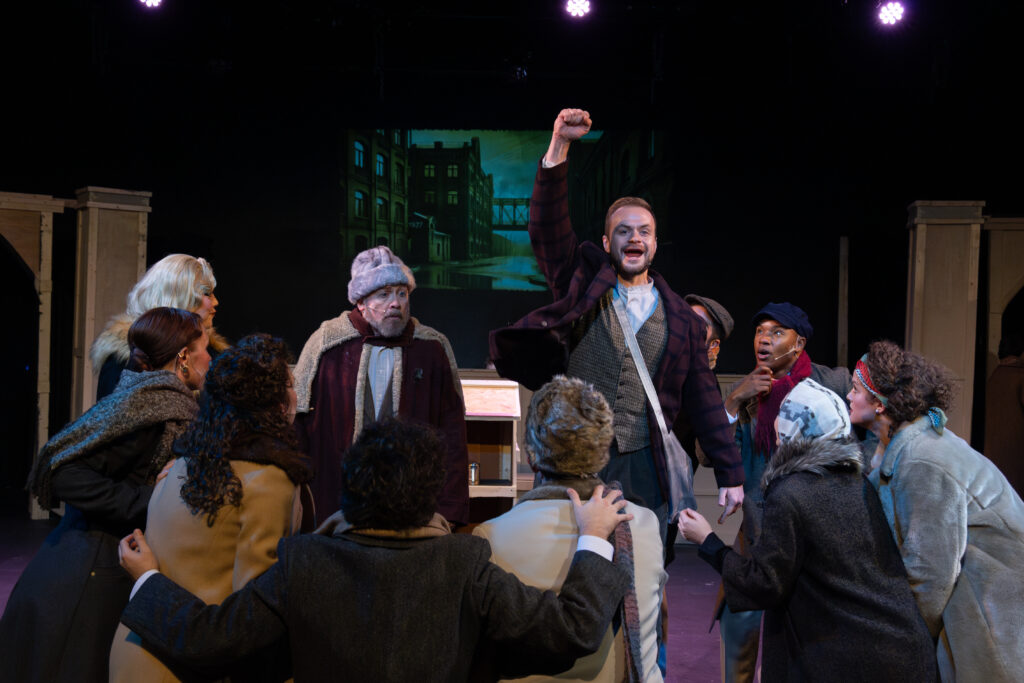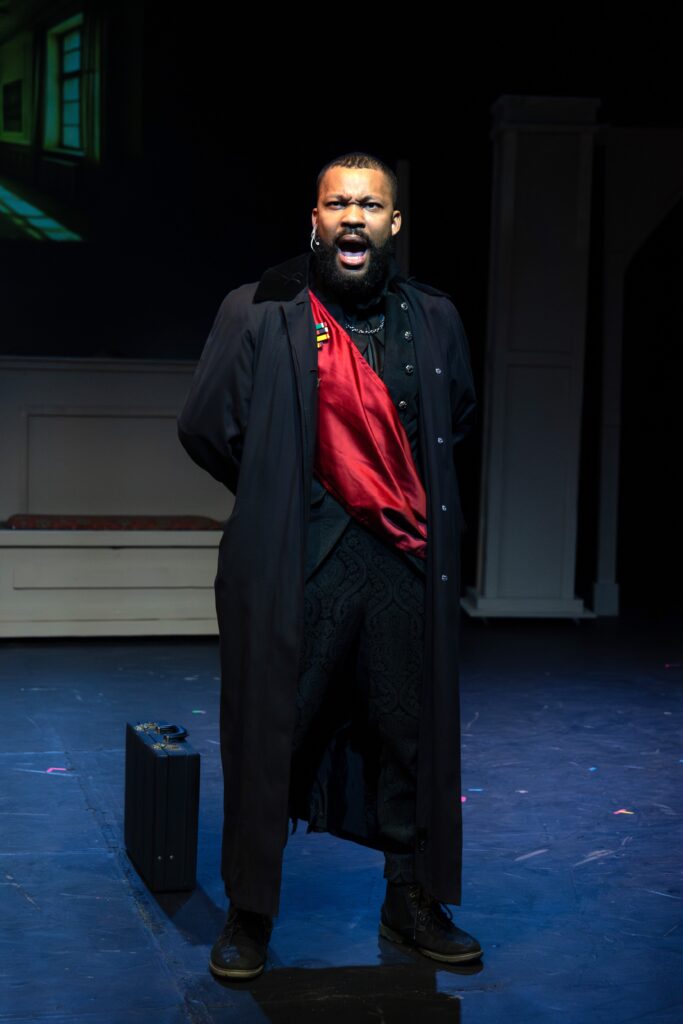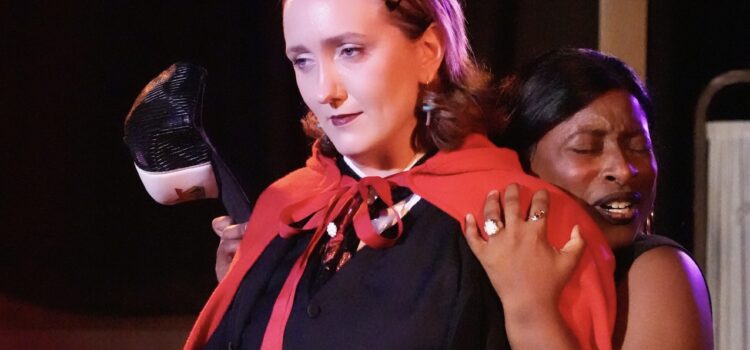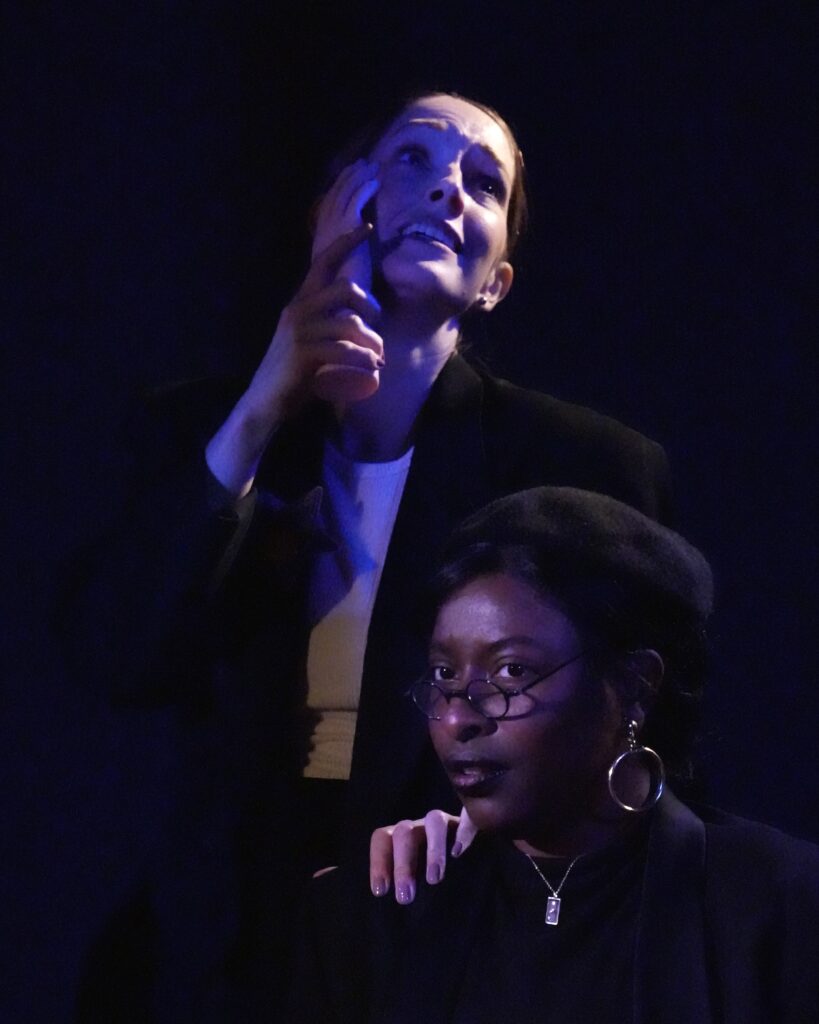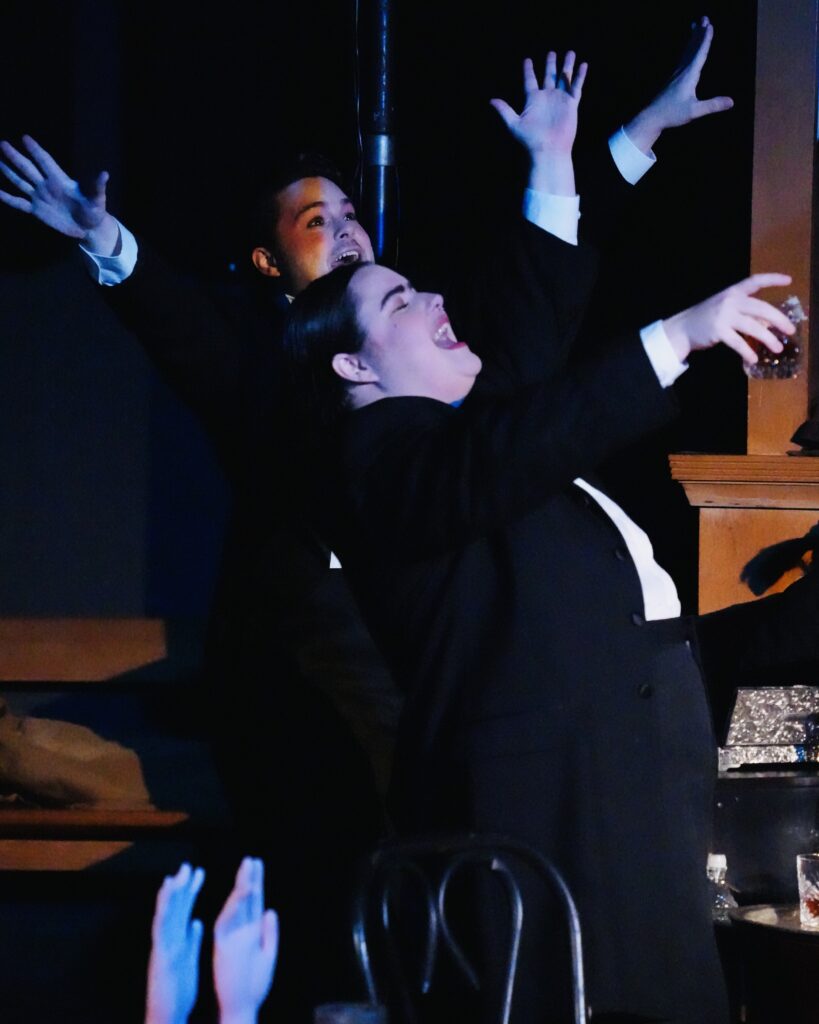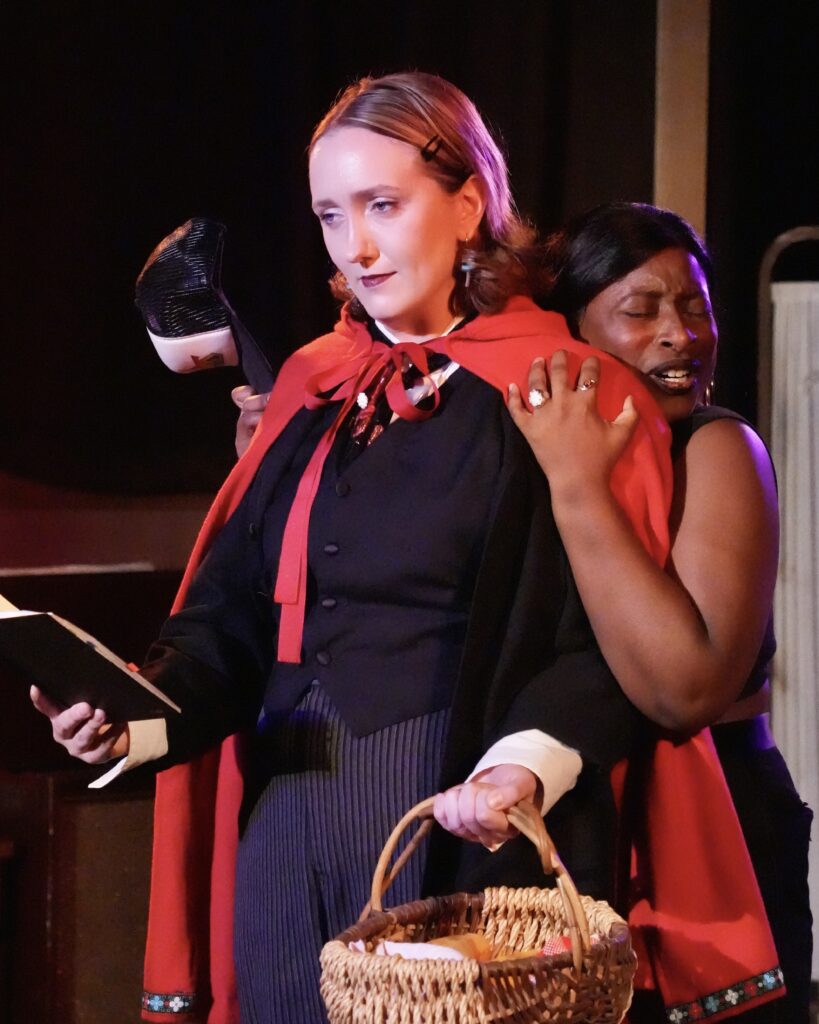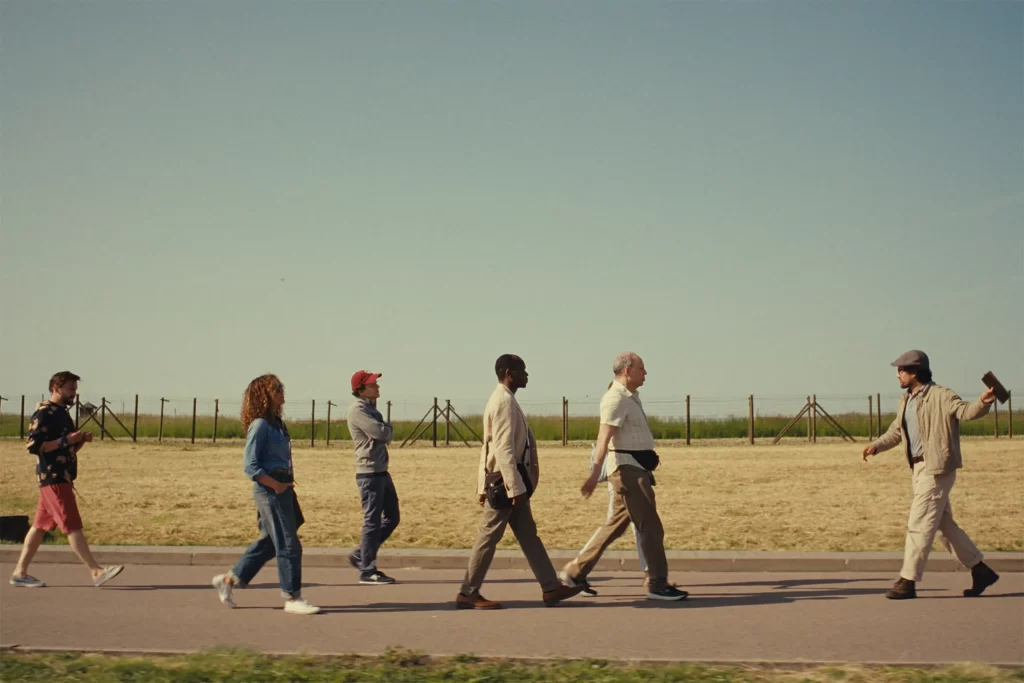By Lynn Venhaus
Will Bonfiglio, long a fixture in both ensemble pieces and one-man shows in the regional professional theater community, is back on stage in familiar territory: Making people laugh.
Post-pandemic, he hasn’t been on St. Louis stages as frequently as he was before COVID, so when he is, it’s a pleasant reminder of what a local treasure he is.
He’s currently appearing as a zany waiter in “First Date” (Nov. 21-Dec. 8) at New Jewish Theatre, singing, dancing and wisecracking. It’s a perfect part for his skillset.
Winner of three St. Louis Theater Circle Awards for Best Performance in a Comedy in a Male or Nonbinary Role, the Wool Studio Theatre is where he has performed some of his best work – the solo shows “Fully Committed” and “Every Brilliant Thing,” plus a two-hander with Jerry Vogel in “Old Wicked Songs,” and ensemble work in “I Now Pronounce,” “Never the Sinner” and “Yentl.”
This production is a homecoming of sorts for him, and he’s thrilled to work with this cast and creative crew.
“It’s a rare and wonderful experience to work on a show where the cast and crew are all such kind and lovely people,” he said.

Bonfiglio’s versatility is key to his appeal, for he can blend in when performing with his respected pals in the more experimental groups ERA (“Make Hamlet”) and SATE, and in other small companies — “Mr. Burns, A Post-Electric Play” by R-S Theatrics, “Photograph 51” and “Oedipus Aparatus” at West End Players Guild, and in the former Insight Theater Company’s “Moon Over Buffalo” and “The Importance of Being Earnest.”
But then he’ll venture into musicals. In “Grey Gardens,” which Max & Louie Productions mounted in 2016, he played both young Joseph Kennedy Jr. in the first act and Jerry a delivery boy in the second act.
He was an integral part of the Variety Club Theatre’s productions “The Little Mermaid,” “The Beauty and the Beast,” and “Mary Poppins.”
Two shows in the Wool Studio Theatre were among the four roles in 2016 that earned him four nominations for St. Louis Theater Circle Awards in 2017. Four! To date, he holds the record for performers most-nominated in a single season.
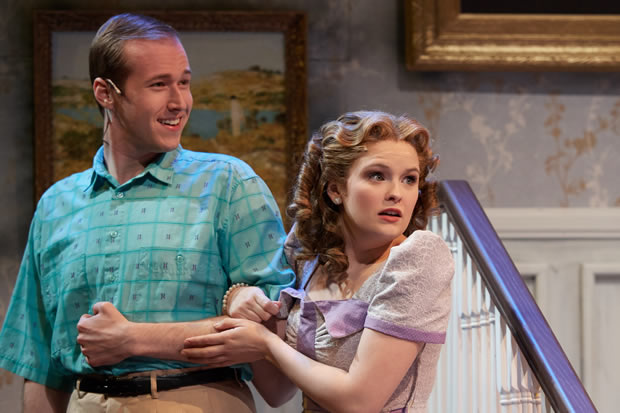
He was nominated for outstanding actor in a comedy for “Buyer & Cellar” at Stray Dog Theatre, which he won; for outstanding supporting actor in a comedy for “As You Like It” at Slightly Askew Theatre Ensemble, for outstanding supporting actor in a drama for “Old Wicked Songs” at New Jewish Theatre, and for outstanding supporting actor in a musical for “Grey Gardens” at Max & Louie Productions.
He received his second Circle Award for “Red Scare on Sunset” in 2018 at Stray Dog Theatre, for which he played Mary Dale, and had to dress in drag and do slapstick wearing high heels.
Not only does he have a background in acting, but also in directing, playwrighting, and producing. At COCA (Center of Creative Arts), he serves on the theater faculty, and recently directed “SIX: Teen Edition.”
In his professional career in the arts, he previously served as COCA’s Director of COCAbiz, where he developed and facilitated professional development workshops using the arts to a variety of corporate and nonprofit partners, including Bayer, BJC HealthCare, Comcast, Commerce Bank, Delta Dental, Edward Jones, and TEDxStLouis.
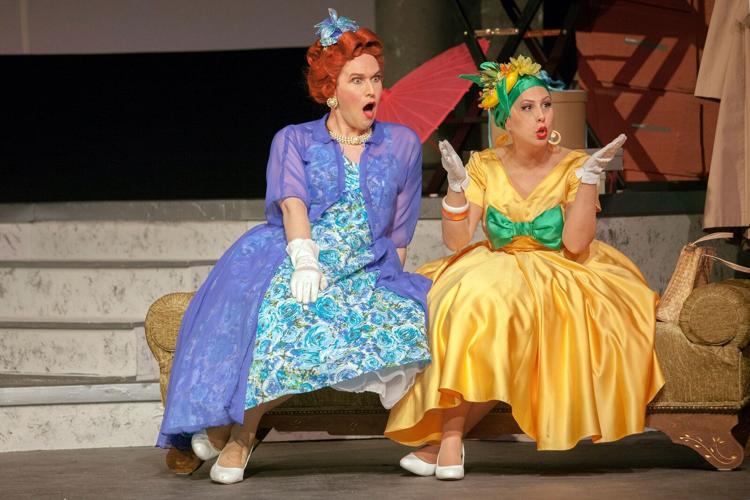
Under his leadership, the program saw an expansion of partnerships to increase access for nonprofit and community organizations as well as the launch of a new equity-centered curriculum around social justice and belonging for all communities.
In 2020, he became one of the youngest people selected for FOCUS Leadership St. Louis.
He is currently the artistic director of theatre at COCA.
Will earned a master’s degree in theatre and performance studies and a master’s in nonprofit management from Washington University in St Louis. His undergraduate degree is from Vanderbilt University in Nashville, Tenn.
An alumnus of the Fulbright Program, he often teaches courses on theatre and performance studies at several area universities.

In the meantime, he and the cast of “First Date” are entertaining audiences
The story unfolds in real time as two young adults meet for a blind date at a local restaurant. Aaron, a nervous newbie to blind dates, has been set up with Casey, a more experienced dater by her brother-in-law, who works with Aaron.
Casey and Aaron’s inner critics take on a life of their own when they become supportive best friends, manipulative exes and protective parents, who sing and dance through icebreakers, appetizers and potential conversational land mines. His musical solo “I’d Order Love” is done with a wink and a smile. He also doubles as Casey’s therapist
First Date at the J’s Wool Studio Theatre (2 Millstone Campus Drive, St. Louis, MO 63146), running November 21 to December 8. Performances are on Thursdays at 7:30pm, Saturdays at 4pm and 8pm, and Sundays at 2pm, except for Thanksgiving weekend where there will be no Thursday show, but a special “Black Friday Getaway Matinee” at 2pm on November 29. Individual tickets are $27- $58. Tickets are available by phone at 314.442.3283 or online at newjewishtheatre.org.

Take Ten Q&A with Will Bonfiglio
1. What is special about your latest project?
The team. It really feels like a community I want to be a part of, and I feel lucky we get to spend so much time together throughout the process.
2. Why did you choose your profession/pursue the arts?
I’ve always loved theatre, and St. Louis has so much of it! For a city of our size, we are truly blessed with an abundance of opportunities to perform and produce work.
3. How would your friends describe you?
Oh, this is so tricky! I honestly don’t know — overscheduled?
4. How do you like to spend your spare time?
As my friends and family know– and are regularly annoyed about (see answer to question 3) — I am often in school, taking or teaching classes in my spare time. But when it’s not the school year, I love to travel when my schedule allows.

5. What is your current obsession?
Not necessarily current, but my always-obsession is Dolly Parton. I’m currently teaching a class on her at WashU this semester. “It’s hard to be a diamond in a rhinestone world!”
6. What would people be surprised to find out about you?
Perhaps that, although I do love performing and being onstage, I’m actually quite introverted.
7. Can you share one of your most defining moments in life?
Probably living abroad after college for a year. It taught me resilience and provided me with many rich friendships that still remain today.
8. Who do you admire most?
My family.
9. What is at the top of your bucket list?
Walk the Camino de Santiago.
10. How were you affected by the pandemic years, and anything you would like to share about what got you through and any lesson learned during the isolation periods? Any reflections on how the arts were affected? And what it means to move forward?
Community. While I applaud and appreciate how everyone tried to continue making work virtually during that time, I am so happy that Zheatre (Zoom theatre) didn’t stick. There’s nothing like a live performance.
11. What is your favorite thing to do in St. Louis?
I enjoy visiting our many wonderful arts and cultural institutions and also trying new restaurants and coffee shops. Love exploring all our great city has to offer!
12. What’s next?
A break!!

More About Will
Name: Will Bonfiglio
Current location: St. Louis, MO
Education: MA, WashU, Theatre & Performance Studies
Day job: Artistic Director of Theatre, COCA-Center of Creative Arts
First job: St. Louis Bread Company.
First play or movie you were involved in or made: I did a few plays here and there growing up, but my first big thing was “Guys and Dolls” in high school
Awards/Honors/Achievements: 3 St. Louis Theatre Circle Awards for Outstanding Actor in a Comedy
























